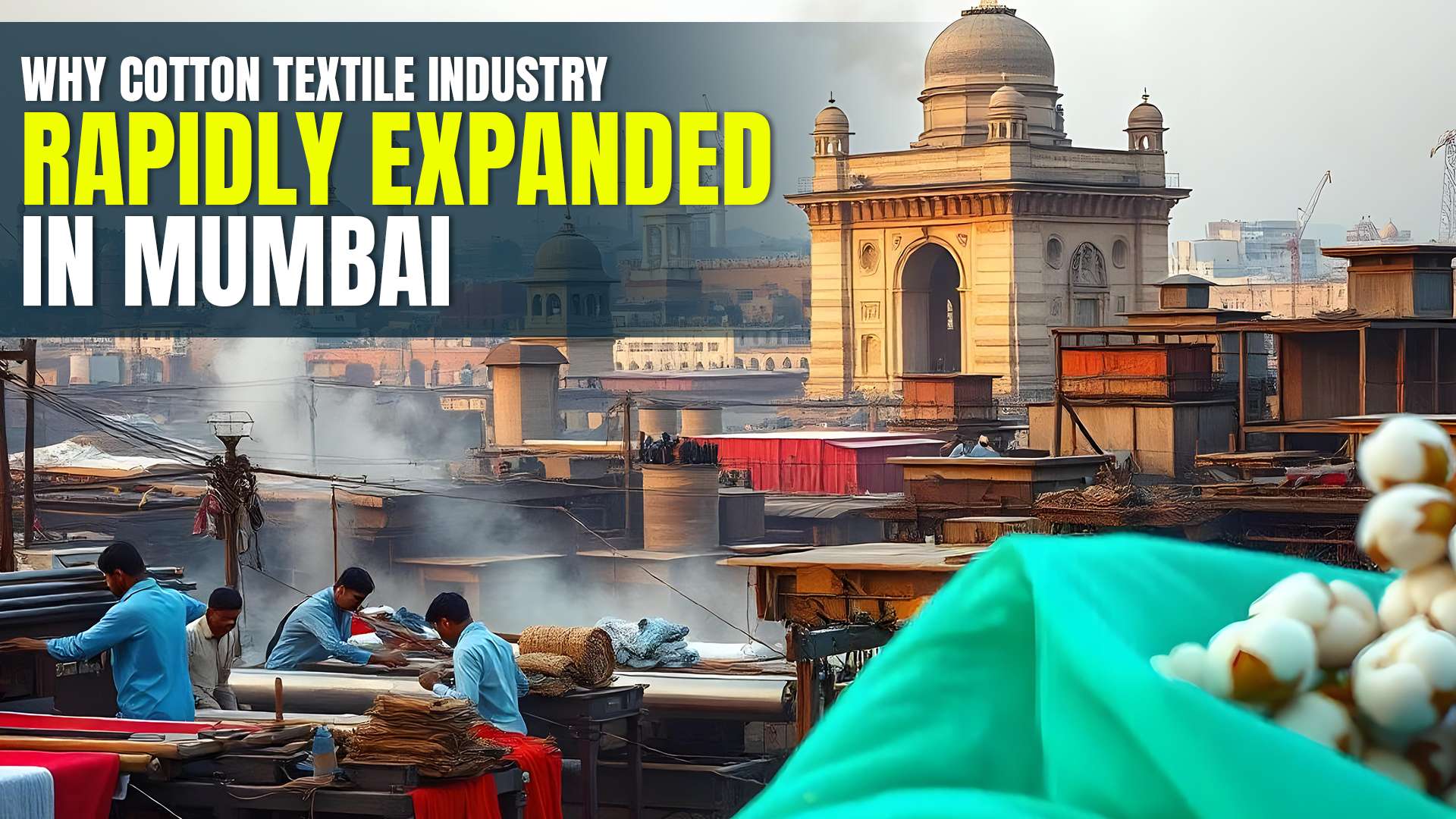Why Cotton Textile Industry Rapidly Expanded In Mumbai.

Share Blog:
The Rise and Evolution of Mumbai's Cotton Textile Industry
Once known as Bombay, Mumbai emerged as one of Asia's premier textile Saree manufacturing hubs during the 19th century. The city's cotton textile industry shaped its industrial landscape and played a pivotal role in India's economic development. This transformation from a fishing village to an industrial powerhouse is a testament to the perfect storm of geographical advantage, colonial influence, and entrepreneurial spirit.
The cotton textile industry encompasses converting raw cotton into finished textile products, including ginning, spinning, weaving, dyeing, and finishing. This fundamental manufacturing sector has historically employed millions while meeting the basic clothing needs of the population. The industry's significance extends beyond mere manufacturing, as it has been instrumental in shaping urban development and social structures wherever it has flourished.
The story of Mumbai's cotton textile industry begins in the 1850s, during the height of British colonial rule. The establishment of the Bombay Spinning and Weaving Company in 1854 by Cowasji Nanabhai Davar marked the beginning of an industrial revolution that would transform the city's economy and social fabric. Mumbai's selection as the epicenter of this industrial growth was no coincidence. The city's natural deep-water harbor provided excellent connectivity for importing machinery and exporting finished goods, while its proximity to cotton-growing regions in Gujarat and Maharashtra ensured a steady supply of raw materials. The British had already established Mumbai as a major port city, complete with railway connections to the interior regions, creating the perfect infrastructure for industrial growth.

The rapid expansion of the industry in Mumbai was driven by a unique combination of circumstances. The American Civil War (1861-1865) disrupted global cotton supply chains, creating an unprecedented opportunity for Indian textile manufacturers to fill the gap in international markets. This period coincided with increased mechanization of the textile industry in Mumbai, allowing local manufacturers to scale up production significantly. Local businessmen, particularly from the Parsi and Gujarati communities, demonstrated remarkable foresight by investing heavily in the textile sector. Their business acumen and willingness to adopt new technologies accelerated the industry's growth, while the Swadeshi movement during India's freedom struggle provided additional impetus by encouraging the use of indigenous textiles.
The city's growing population, supplemented by migration from surrounding rural areas, provided a ready workforce for the expanding mills. This labor force was crucial in maintaining the industry's momentum and contributed to the creation of a unique urban working-class culture that would define Mumbai for generations to come. The textile industry became more than just an economic engine; it was a social transformer that shaped the city's identity and character.

For Franchisee Inquiry, Call: +9163521 77288
Contemporary Position of the Textile Industry in Mumbai
Today, Mumbai's textile industry landscape has evolved significantly from its historical roots. While many original mills have closed or been redeveloped, the industry has transformed rather than disappeared. Modern textile parks and specialized units have replaced traditional mills, focusing on high-value products and technical textiles. The textile industry in India is actively embracing automation, digital printing, and sustainable manufacturing practices, recognizing that this modernization is essential for competing in global markets.
Looking ahead, several trends are shaping the industry's future. There is a growing emphasis on sustainable production, with manufacturers increasingly focusing on eco-friendly processes and organic cotton products. The technical textiles segment is gaining prominence, with specialized fabrics being developed for industrial, medical, and technical applications. Digital innovation, including the integration of AI and IoT in manufacturing processes, is becoming increasingly important, while export orientation is shifting towards value-added products for international markets.
Despite these positive developments, the textile industry in India faces several significant challenges. Competition from other textile manufacturing centers, both domestic and international, continues to intensify. The need for continuous technological upgradation requires substantial capital investment, while environmental concerns and sustainability requirements impose additional costs and complications. Labor costs and skill development needs also present ongoing challenges that need to be addressed.
However, these challenges are balanced by significant opportunities. India's growing domestic market provides a strong foundation for continued growth, while rising global demand for sustainable textiles opens new market possibilities. The technical textile segment offers potential for high-value production, and better integration with global value chains could provide access to new markets and technologies.
Conclusion:
Mumbai's cotton Saree textile industry story is ultimately one of resilience and adaptation. From its humble beginnings in the 1850s to its current avatar as a modern, technology-driven sector, the industry continues to evolve and reinvent itself. While the traditional mill landscape may have changed, the city's textile heritage lives on through new manufacturing and business models. As the textile industry in India positions itself as a global textile hub, Mumbai's industry stands poised to write its next chapter, building on its rich historical foundation while embracing future challenges and opportunities. The industry's ability to adapt and transform, demonstrated throughout its history, suggests that it will continue to play a vital role in India's economic landscape for years to come.

For Wholsale Inquiry, Call: +916358907210
Also read: Why is Clothing Franchise Business Popular In India.
FAQ:
1. What are the reasons behind choosing Mumbai as a base for cotton mills?
A). Mumbai's proximity to cotton-growing areas, humid climate favorable for cotton processing, and great port are some of the reasons why it was chosen as a base for cotton mills.
2. How did the cotton mills change Mumbai?
A)- The establishment of cotton mills in Mumbai led to massive job creation, which in turn led to a large influx of people. This turned Mumbai into a major industrial city.
3. Who worked in those cotton mills?
A)- Most of them were from surrounding villages and small towns. They worked long hours in the mills and lived in chawls built near the mills.
4. Did cotton textiles produced in Mumbai, find only Indian markets?
A)- Not at all, however, many were sold in India. During some forced periods when other major cotton producers could not supply the world, Mumbai's mill manufacturers exported tons of cotton cloth to other countries.
5. Are these cotton mills still running?
A)- Almost all old cotton mills have now closed down and there is an unambitious existence left for the mill areas themselves from where shopping malls and offices have come up as well as residential buildings in modern Mumbai.

For Franchisee Enquiry, Call: +9163521 77288
Also Read...





